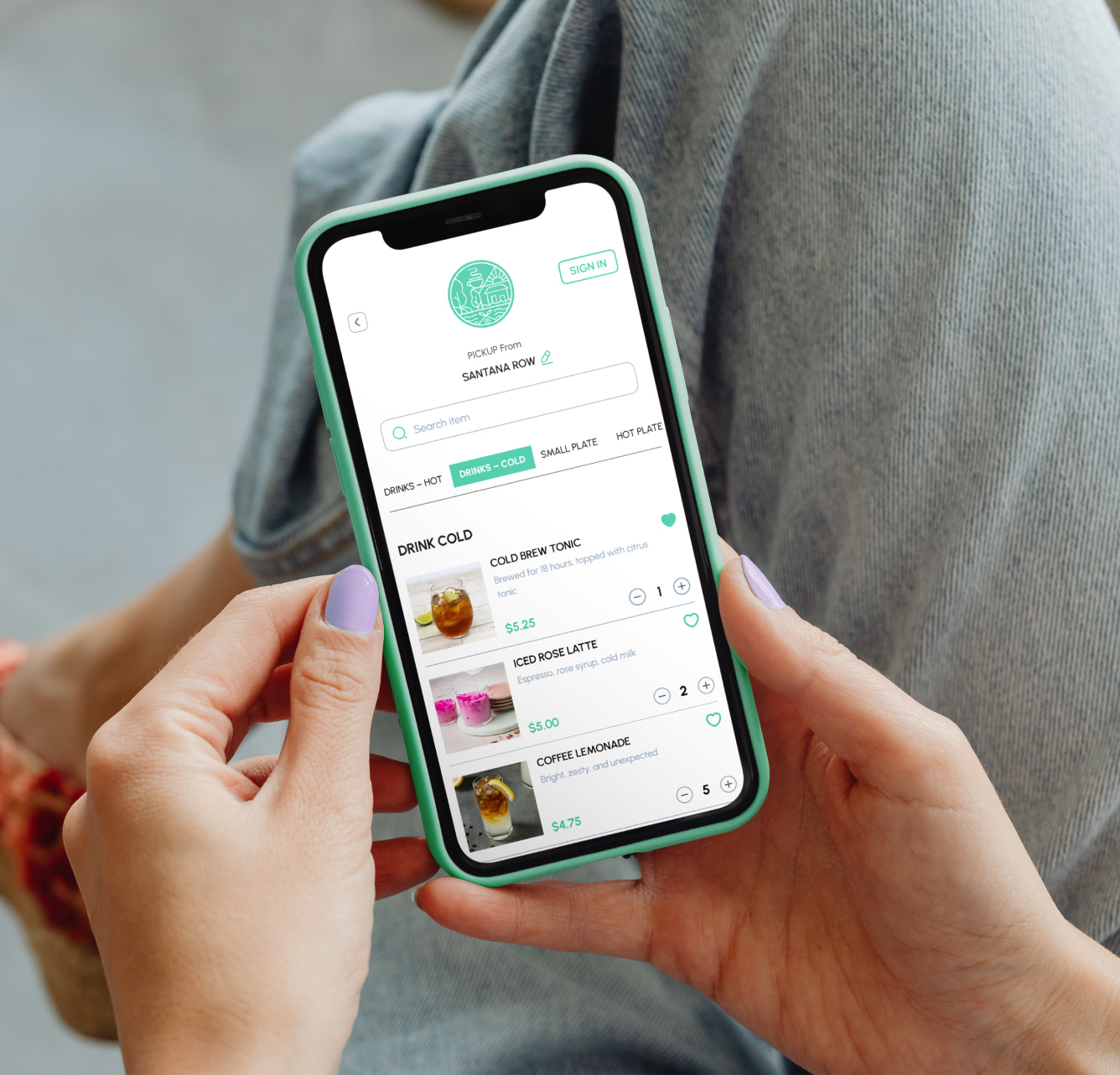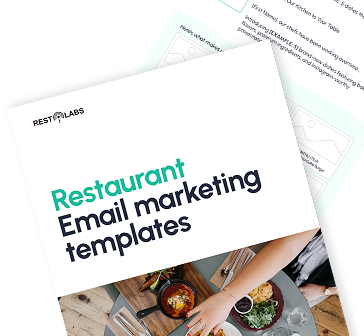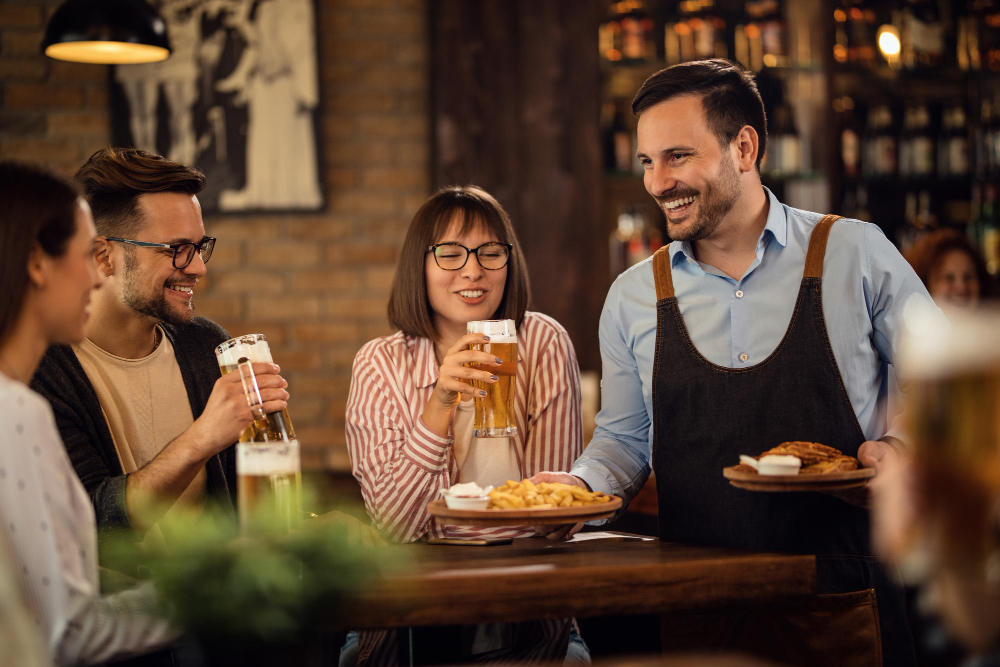Key Takeaways
In today's competitive restaurant landscape, effective marketing strategies are essential for standing out and driving revenue. With nearly 1.6 million restaurants having pivoted to online ordering and delivery models in recent years, the digital marketplace has become increasingly crowded. The good news? You don't need a massive budget to implement powerful marketing strategies for restaurants that deliver real results. For more insights on digital marketing for restaurants, consider exploring strategies that align with your business goals.
The statistics speak for themselves: 67% of all restaurant orders now come through online channels, and the US food delivery market recorded $26.5 billion in transactions—a figure expected to grow by 135%. For restaurant owners feeling the pressure of fierce competition while managing tight profit margins, cost-effective marketing solutions are more valuable than ever. Understanding why restaurant marketing is crucial now more than ever can help you prioritize your efforts.
In this comprehensive guide, we'll explore seven proven, commission-free marketing strategies specifically designed to help restaurants increase visibility, engage customers, and boost sales in 2025—all without spending a dime.
Build a Strong Online Presence
A successful restaurant marketing strategy begins with establishing a solid digital foundation. Your online presence serves as the virtual storefront for your restaurant, often providing potential customers with their first impression of your brand. Having a professional restaurant website is essential for making a good first impression and converting visitors into customers.
Optimize Your Website and Online Menu
Your restaurant website is often the first touchpoint for potential customers searching for dining options. A well-designed, user-friendly website can significantly impact your conversion rates and customer experience:
- Mobile Optimization: Ensure your website is fully responsive and loads quickly on all devices, as more than 60% of restaurant searches occur on mobile.
- Clear Menu Display: Feature an up-to-date, easy-to-read menu with high-quality food images and detailed descriptions that highlight signature dishes and specialties.
- Online Ordering Integration: Implement a commission-free online ordering system directly on your website to capture orders without paying hefty third-party fees. For guidance on building a restaurant website that includes online ordering, consider the importance of seamless integration.
- Location and Hours: Make your address, operating hours, and contact information prominently visible on every page.
By optimizing these elements, you create a seamless digital experience that encourages visitors to place orders or make reservations directly through your platform.
Set Up and Leverage Social Media Profiles
Social media platforms offer powerful, free marketing channels for restaurants to showcase their brand personality and connect with customers:
- Platform Selection: Focus on platforms where your target audience is most active—typically Instagram and Facebook for restaurants.
- Profile Optimization: Complete all profile sections with consistent branding, high-quality images, and accurate business information.
- Content Calendar: Develop a regular posting schedule to maintain visibility and engagement.
Google Business Profile: Claim and optimize your Google Business Profile to improve local search visibility and make it easier for customers to find essential information about your restaurant. Understanding the importance of restaurant marketing tactics to put your business on the map can further enhance your online presence.
Harness the Power of Social Media Marketing
With billions of active users worldwide, social media platforms offer restaurants unparalleled opportunities to connect with customers, showcase menu items, and build brand loyalty—all for free. For more information on how to leverage social media for device-friendly ordering, consider the benefits of integrating online ordering into your social media strategy.
Use Instagram Effectively with Hashtags
Instagram has become the go-to platform for food marketing, with 80% of online food orders influenced by appetizing food images seen on the platform. To maximize your Instagram presence:
- Post Drool-Worthy Content: Share high-quality images of your signature dishes, behind-the-scenes content, and customer experiences. Even smartphone photos can be effective when well-composed and enhanced with filters.
- Strategic Timing: Schedule posts shortly before typical meal times when customers are deciding what to eat. This strategic timing can trigger cravings and drive immediate orders.
- Hashtag Strategy: Incorporate popular food-related hashtags like #FoodGasm, #FoodPorn, and #TacoTuesday to increase discoverability. Also use local hashtags and trending topics to expand your reach.
- Hashtag Analytics: Use tools like Hashtagify and Talkwalker to identify trending and relevant hashtags in your niche and location.
Maintaining a consistent color palette and visual style across your posts helps create a recognizable brand identity that customers will remember.
Encourage User-Generated Content
User-generated content (UGC) is one of the most authentic and cost-effective marketing tools available to restaurants. It helps:
- Reflect genuine dining experiences
- Build community around your brand
- Increase engagement and reach
Implement these strategies to encourage UGC:
- Photo Contests: Ask followers to share photos of their favorite dishes from your menu using a branded hashtag.
- Menu Input: Invite customers to suggest new menu items or names for upcoming dishes.
- Reposting: Share customer photos and posts that tag your restaurant, giving proper credit to the original creator.
- Social Media Contests: Run regular contests that encourage customers to create and share content about your restaurant for a chance to win prizes like free meals or exclusive experiences.
UGC not only provides you with free marketing materials but also builds a sense of community and loyalty among your customer base.
Partner with Food Influencers
Influencer marketing can significantly expand your restaurant's reach without requiring a large budget:
- Local Influencer Research: Identify food bloggers and lifestyle influencers in your area whose audience aligns with your target market.
- Mutually Beneficial Partnerships: Offer complimentary meals in exchange for honest reviews and social media coverage.
- Exclusive Promotions: Create special discount codes for influencers to share with their followers, allowing you to track the effectiveness of each partnership.
- Authentic Relationships: Focus on building genuine relationships with influencers who truly appreciate your food and brand values.
Even micro-influencers with smaller but highly engaged local followings can drive significant traffic to your restaurant website and physical location.
Engage Customers with Email Marketing
Email marketing remains one of the most effective and direct ways to communicate with your customers. With a return on investment of $36 for every $1 spent, it's a marketing channel restaurants can't afford to ignore—especially since the basic implementation can be completely free.
Segment and Personalize Campaigns
Personalized emails with customized subject lines are 26% more likely to be opened and can generate a 760% increase in email revenue. To maximize the effectiveness of your email marketing:
- Build Your Email List: Collect customer emails through your website, online ordering system, and in-restaurant sign-ups.
- Segment Your Audience: Divide your email list based on factors like:
- Gender
- Geographic location
- Age
- Job title or company size
- Interests
- Past purchases
- Customer status (new vs. regular)
- Personalize Content: Tailor your messages based on customer preferences and behaviors, including personalized recommendations based on previous orders.
- Timing Strategy: Send emails at optimal times when they're most likely to be opened and acted upon. Learn more about the best times to send promotional emails.
Free email marketing tools like HubSpot, Campaign Monitor, and Sender can help you implement these strategies without a significant investment.
Utilize Facebook Events and Community Building
Facebook remains a powerful platform for restaurants to build community and promote special occasions. Facebook Events, in particular, offer an excellent opportunity to generate buzz around promotions, special menus, or themed nights.
To make the most of Facebook Events:
- Create Compelling Event Pages: Use attention-grabbing titles, detailed descriptions, and high-quality images that showcase what makes your event special.
- Optimize for Discovery: Use relevant keywords in your event description and take advantage of Facebook's geo-targeting to reach local users.
- Custom Hashtags: Create event-specific hashtags to track engagement and encourage attendees to share their experiences.
- Tag Partners: Include relevant partners, sponsors, or performers in your event to expand its reach to their audiences.
- Cross-Promotion: Share your Facebook Events across other marketing channels, including your website, email newsletters, and other social media platforms.
Beyond events, use your Facebook page to build community by sharing behind-the-scenes content, staff spotlights, and customer stories that showcase your restaurant's unique culture and values.
Leverage Customer Reviews and Reputation Management
In the digital age, online reviews function as modern word-of-mouth marketing—one of the most trusted forms of recommendation. A Harvard Business School study found that a one-star increase in Yelp rating can lead to a 5-9% increase in revenue for restaurants.
To harness the power of customer reviews:
- Claim All Review Profiles: Ensure your restaurant has claimed and optimized listings on Google, Yelp, TripAdvisor, and other relevant review platforms.
- Encourage Honest Reviews: Tactfully ask satisfied customers to share their experiences online through table tents, receipt messages, or follow-up emails.
- Respond to All Reviews: Address both positive and negative reviews promptly and professionally. This demonstrates your commitment to customer satisfaction and can often turn negative experiences around.
- Learn from Feedback: Use review insights to identify areas for improvement in your food, service, or ambiance.
- Showcase Positive Reviews: Feature glowing testimonials on your website and social media channels to build trust with potential customers.
Remember that reputation management is an ongoing process that requires consistent monitoring and engagement to maintain a positive online presence.
Implement Loyalty Programs and Promotions
Loyalty programs are powerful tools for encouraging repeat business and increasing customer lifetime value. According to research, acquiring a new customer costs five times more than retaining an existing one, making loyalty initiatives a cost-effective marketing strategy.
Effective loyalty program options include:
- Points-Based Systems: Award points for purchases that can be redeemed for discounts, free items, or exclusive experiences.
- Tiered Programs: Offer escalating benefits as customers reach higher spending thresholds, encouraging increased patronage.
- Punch Cards: A simple, low-tech option where customers receive a stamp or punch for each visit, with a reward after completing the card.
- Birthday/Anniversary Rewards: Offer special promotions to celebrate customer milestones, creating emotional connections with your brand.
- Referral Bonuses: Reward customers who bring friends and family to your restaurant, expanding your customer base through trusted recommendations.
When implementing loyalty programs, focus on creating genuine value for customers rather than simply discounting your products. The most successful programs make customers feel appreciated and recognized while encouraging behaviors that benefit your restaurant's bottom line.
Embrace Technology for Seamless Online Ordering and Marketing
In today's digital-first world, technology integration is essential for effective restaurant marketing. The right tech solutions can streamline operations while enhancing your marketing efforts.
Key technology implementations to consider:
- Commission-Free Online Ordering: Implement a direct online ordering system that allows you to avoid third-party commissions while maintaining control of your customer data.
- QR Code Menus: Use QR code ordering to provide contactless menu access, streamline the ordering process, and collect valuable customer data.
- Mobile App: Consider developing a branded mobile app that offers ordering capabilities, loyalty program integration, and push notifications for promotions.
- POS Integration: Connect your POS system with your marketing tools to track customer behavior and tailor promotions based on ordering patterns.
- Automated Marketing: Use automation tools to schedule social media posts, send triggered emails based on customer actions, and maintain consistent communication.
By embracing these technologies, you can create a seamless customer experience while gathering valuable data to inform your marketing strategies and business decisions.
Monitor and Analyze Your Marketing Performance
The most effective restaurant marketing strategies are those that evolve based on performance data. Implementing a data-driven approach allows you to identify what's working, what isn't, and where to allocate your resources for maximum impact.
Essential metrics to track include:
- Website Traffic: Monitor visitor numbers, traffic sources, and page performance to optimize your online presence.
- Conversion Rates: Track how many website visitors complete desired actions like placing orders or making reservations.
- Social Media Engagement: Analyze likes, comments, shares, and click-through rates to refine your content strategy.
- Email Performance: Review open rates, click-through rates, and conversion metrics to improve your email campaigns.
- Customer Acquisition Cost: Calculate how much it costs to acquire new customers through various marketing channels.
- Customer Lifetime Value: Determine the total revenue you can expect from a typical customer throughout your relationship.
Free tools like Google Analytics, social media insights, and email marketing platform analytics can provide valuable data without additional cost. Regular review of these metrics allows you to double down on successful strategies while adjusting or abandoning those that aren't delivering results.
Elevate Your Restaurant with Restolabs
Implementing effective marketing strategies for restaurants requires the right tools and technology. Restolabs provides a powerful, commission-free online ordering system designed specifically for restaurants looking to grow their digital presence and increase direct orders.
Our platform enables you to showcase your menu beautifully, integrate with your existing POS system, and collect valuable customer data for personalized marketing. With Restolabs, you maintain complete control over the customer experience while avoiding the high commissions charged by third-party delivery platforms.
The restaurant industry continues to evolve rapidly, with digital ordering becoming increasingly dominant. By implementing the marketing strategies outlined in this article and leveraging technology solutions like Restolabs, your restaurant can thrive in this competitive landscape.
Ready to take your restaurant marketing to the next level? Schedule a demo today to see how Restolabs can help you implement these strategies and grow your business.
Frequently Asked Questions
The most effective free marketing strategies for restaurants include optimizing your social media presence with high-quality food photos, leveraging user-generated content, implementing strategic hashtag usage, encouraging and responding to customer reviews, building email marketing campaigns, utilizing Facebook Events, and partnering with local food influencers. Local SEO optimization, including a complete Google Business Profile, is also crucial for improving visibility without significant investment. These tactics help build brand awareness, engage customers, and drive traffic to your restaurant with minimal financial outlay.
Restaurants can boost sales through online ordering by implementing a commission-free system directly on their website, eliminating the 15-30% fees charged by third-party platforms. This system should feature an intuitive interface, mouth-watering food images, and easy customization options. Integration with your POS system streamlines operations, while customer data collection enables personalized marketing.
Customer reviews are critical to restaurant marketing as they significantly impact purchasing decisions—94% of diners choose restaurants based on online reviews. Reviews build trust with potential customers through social proof and improve your local SEO rankings, making your restaurant more visible in search results. They provide valuable feedback for operational improvements and create opportunities for engagement when you respond thoughtfully to both positive and negative comments.
How can restaurants create successful loyalty programs? Successful restaurant loyalty programs start with a simple, easy-to-understand structure—whether points-based, visit-based, or tiered membership. Digital implementation through a mobile app or integrated POS system eliminates friction and enables data collection. Personalization is crucial; tailor rewards based on customer preferences and ordering history rather than offering generic discounts. Create a mix of attainable short-term rewards and aspirational long-term benefits to maintain engagement. Promote your program across all customer touchpoints, from table tents to email signatures.


.gif)




.png)




